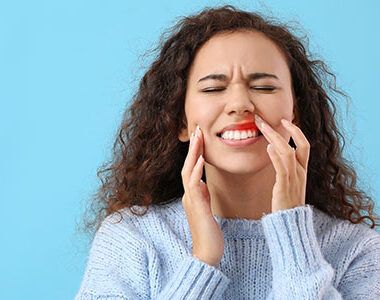Embrace the Colors of Diversity: Celebrating World Vitiligo Day and the Power of Inclusivity
By Daniela Moreno, Certified Health Coach
Last Updated on June 10th, 2025 / Published on April 24, 2025

As we increasingly celebrate diversity and inclusivity, we must embrace conditions that are contrary to conventional beauty standards in today’s society.
We can do this by viewing certain skin conditions more positively. Take, for example, a skin condition known as vitiligo. This chronic disorder causes patches of skin to lose pigment or color. According to the Global Vitiligo Foundation, vitiligo affects millions of people worldwide. Understanding its signs, symptoms, and types is crucial in recognizing and addressing the condition.
Vitiligo can initially appear as a physical difference. However, it is an opportunity to see and appreciate every person’s unique beauty.
In this article, we will provide an overview of the many manifestations of vitiligo and offer insight into its diagnosis. By increasing its awareness and knowledge, we can foster an inclusive society that provides support for individuals living with this condition.
What is Vitiligo?
Vitiligo is a condition that causes the skin to lose its color, according to the American Academy of Dermatology (AAD). This condition affects people of all ages, ethnicities and genders resulting in visible white patches on their skin.
Vitiligo is a rare skin condition that occurs when your immune system mistakenly targets and destroys melanocytes, the cells responsible for producing melanin, the pigment that gives color to skin, hair, and eyes. This causes a contrast between the depigmented patches and your natural skin tone.
Vitiligo is not contagious or life-threatening yet can have significant social and psychological ramifications on those affected. Visible white patches may result in feelings of self-consciousness, insecurity, and emotional distress for the person afflicted.
Scientists don’t fully understand the cause of vitiligo, but they believe it is an autoimmune disorder. This means the body’s immune system is harming its own melanocytes. They also know that genetic factors, environmental triggers, and autoimmune conditions such as thyroid disorders, diabetes, and certain inflammatory diseases can contribute to the development of vitiligo.
Autoimmune Conditions Tied to Vitiligo
Around 15-25% of people with vitiligo may also be affected by one other autoimmune disease, including:
- Hyperthyroidism (an overactive thyroid gland)
- Rheumatoid arthritis
- Type 1 diabetes
- Psoriasis
- Pernicious anemia
- Addison disease
- Systemic lupus erythematosus
- Celiac disease
- Crohn disease
- Ulcerative colitis
What are the Signs and Symptoms of Vitiligo?
You may be able to tell you have vitiligo if you notice the following signs and symptoms:
- Sensitivity to sunlight: Affected areas may be more susceptible to sunburn or sun damage.
- Premature graying of hair: Hair within the depigmented patches may turn white or gray prematurely.
- Patches of depigmented skin: White or light-colored patches appear on various body parts.
- Gradual progression: Vitiligo may start with small, isolated patches and spread over time.
Discuss with your doctor if you notice these signs and symptoms.
What Parts of Your Body Can You Have Vitiligo?
The most common places to have symptoms of vitiligo include:
- Hands
- Feet
- Arms
- Face
- Mucous membranes (inside of your mouth, lips, and nose)
- Genitals (penis)
Vitiligo looks different from person to person. In some people, the depigmentation may stabilize and remain unchanged for long periods. In contrast in others, it may spread and affect larger areas over time.
What are the Types of Vitiligo?
- Generalized Vitiligo: The most common type, characterized by widespread depigmentation on most skin surfaces.
- Segmental Vitiligo: Also called unilateral vitiligo, depigmentation occurs on one side or a specific body segment, typically during childhood or adolescence. It progresses slower than generalized vitiligo.
- Focal Vitiligo: Small, localized patches appear in a specific area, often seen in younger individuals.
- Acrofacial Vitiligo: Affects the extremities, such as fingers, toes, and facial areas, like lips and around the eyes.
- Mucosal Vitiligo: Involves depigmentation of mucous membranes, such as the lips, inside the mouth, and genital area.
Vitiligo Treatment
Vitiligo currently does not have an effective cure, however, there are a variety of treatment options available to manage and improve skin appearance. These may include:
- Medicines or medicated skin creams, such as corticosteroids or a calcineurin inhibitor, may be able to return color to the white patches of skin.
- Use of light (UVB phototherapy) to help return color to the skin. There are several different forms of light therapy.
- Depigmentation, or removing color from dark areas of the skin so they match the white patches.
Treatment choice depends on the individual’s preferences, the extent of the condition, and the recommendation of a dermatologist or healthcare provider.
Vitiligo may present challenges but does not define your worth or beauty. Many people with vitiligo have accepted themselves and become advocates for self-acceptance, raising awareness, and advocating inclusivity.
With support, education, and an inclusive wellness approach, you can lead a fulfilling and empowered life embracing the beauty of diversity.
World Vitiligo Day
World Vitiligo Day is observed every year on the 25th of June to honor and recognize the beauty, strength, and resilience of people living with vitiligo.
Every year 25th June comes with an important reminder for all of us to celebrate and embrace diversity while working towards building an inclusive and compassionate society.
Let us come together in commemorating World Vitiligo Day by spreading awareness and tapping into the profound insights gained from embracing the beauty of diversity.
Vitiligo, with its distinct depigmentation patches, is a powerful symbol of the beauty found within our differences.
Embodying diversity, including conditions like vitiligo, has never been more essential in today’s society. Rigid beauty standards have long shaped norms of acceptance, appreciation, and inclusivity. By accepting the individual experiences of those living with vitiligo, we can break down stereotypes and foster an environment of compassion and understanding.
Vitiligo teaches us that beauty is not confined to a narrow definition but is instead a vibrant tapestry of colors, textures, and stories. It reminds us that our differences are what make us truly remarkable, as they reflect the rich diversity of humanity. When we celebrate and embrace these differences, we cultivate a society where everyone feels valued, seen, and accepted for who they are.
By accepting our differences, we can also improve our general well-being. We can change our attitudes, broaden our perspectives, and develop empathy for others. We can also remove barriers, eliminate misconceptions, and create a supportive environment.
In addition, diversity encourages a positive self-image. We also learn to value our individuality and intrinsic worth when we appreciate beauty in all its forms. This journey of self-acceptance fosters resilience and confidence.
Conclusion
Acceptance of diversity can be an extraordinary journey full of compassion, growth, and self-discovery. When exploring vitiligo as an emblem of uniqueness and resilience, we learn that our differences make us truly beautiful. By cultivating empathy, fostering inclusivity, and accepting all as equal individuals we create an inclusive world that celebrates its diversity and embraces its beauty.
Let us stand together, inspired by World Vitiligo Day, to advocate for inclusivity, spread awareness, and cultivate a culture of empathy. Together, we can positively impact the lives of individuals with vitiligo and create a world where everyone is embraced and celebrated for their unique beauty.
References:
Hamzavi, -Dr. Iltefat (no date) Dr. Iltefat Hamzavi, Global Vitiligo Foundation. Available at: https://globalvitiligofoundation.org/vitiligo-facts/ (Accessed: 22 June 2023).
Living with Vitiligo: Tips for managing symptoms: Vitiligo Society (2023) The Vitiligo Society. Available at: https://vitiligosociety.org/living-with-vitiligo/ (Accessed: 22 June 2023).
Vitiligo – American Osteopathic College of Dermatology (AOCD). Aocd.org. Published 2019. https://www.aocd.org/page/Vitiligo (Accessed: 22 June 2023).
Vitiligo: Diagnosis and treatment. American Academy of Dermatology. Published June 29, 2022. Available at: https://www.aad.org/public/diseases/a-z/vitiligo-treatment (Accessed: 21 June 2023).
Vitiligo: Diagnosis and treatment. American Academy of Dermatology. Published 2019. Available at: https://www.aad.org/public/diseases/a-z/vitiligo-treatment (Accessed: 21 June 2023).
Vitiligo (2022) Mayo Clinic. Available at: https://www.mayoclinic.org/diseases-conditions/vitiligo/diagnosis-treatment/drc-20355916 (Accessed: 22 June 2023).
Vitiligo (2022) Mayo Clinic. Available at: https://www.mayoclinic.org/diseases-conditions/vitiligo/symptoms-causes/syc-20355912 (Accessed: 22 June 2023).
Vitiligo (2023) National Institute of Arthritis and Musculoskeletal and Skin Diseases. Available at: https://www.niams.nih.gov/health-topics/vitiligo#:~:text=Vitiligo%20is%20a%20chronic%20(long,turn%20a%20milky%2Dwhite%20color (Accessed: 21 June 2023).
Vitiligo: Self-care. Tips for Managing. American Academy of Dermatology. Available at: https://www.aad.org/public/diseases/a-z/vitiligo-self-care (Accessed: 21 June 2023).
Vitiligo: Types, Symptoms, Causes, Treatment & Recovery. Cleveland Clinic. https://my.clevelandclinic.org/health/diseases/12419-vitiligo#diagnosis-and-tests) Accessed June 23, 2023.





